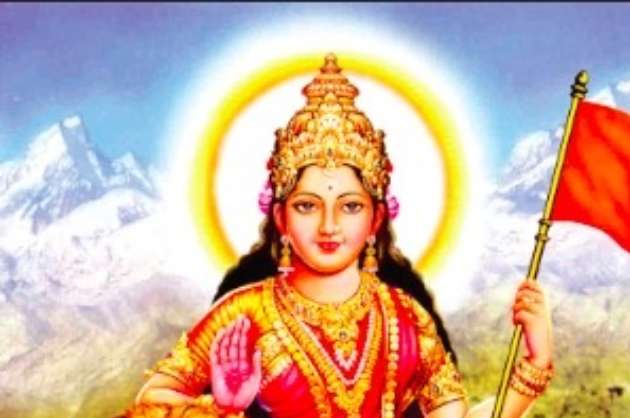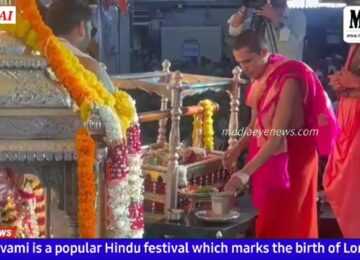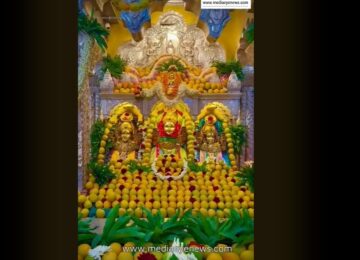Anupama Nair
This year 2022, is the 75th year of Independence from the British. There is hardly a month before our Independence Day. Our beloved Prime Minister decided to celebrate this year as “Azadi ka Amrit Mahotsav. So, I am starting to write a feature on all those sons and daughters of Bharat Ma who fought against foreign invasion from time immemorial. I had written about Bharat Ma, As it is said “Janani Janmabhumishcha Swargadapi Gariyasi” which means “mother and motherland are superior even to heaven” in Dev Bhasha Sanskrit, from our great epic Ramayana. I believe in this motto and think my mother and Bharat Maa are superior to heaven. Today I will be writing about another great king Chandragupta Maurya who defeated the Greeks.
None of the ancient texts mention clearly when Chandragupta was born. Plutarch claims that he was a young man when he met Alexander the Great during his invasion of India (326-325 BC). Assuming the Plutarch’s account is true, Raychaudhuri a historian claimed in 1923 that Chandragupta may have been born after 350 BC. Chandragupta's life and accomplishments are described in ancient and historical Greek, Hindu, Buddhist, and Jain texts, though they significantly vary in detail, which is expected. But they agree on the period of his reign (321–297 BC). Chandragupta Maurya was a pivotal figure in the history of Bharat, laying the foundations of the first government to unite most of South Asia.
The early life of Chandragupta Maurya is unclear and varies by source. According to the Sinhalese Buddhist tradition, Chandragupta's mother was pregnant when his father, who was the chief of the Maurya clan, was killed in a battle. His mother escaped to Patliputra (Patna) with the help of her brothers. For Chandragupta's safety, his maternal uncles allowed a cowherd to adopt him. When Chandragupta grew up, the cowherd sold him to a hunter who employed him to tend cattle. The greatest influence in his life was when he met the great philosopher Chanakya.
The Buddhist and Hindu sources present different versions of how Chandragupta met Chanakya. The sources mention young Chandragupta creating a mock game of a royal court that he and his cowherd friends played near Vinjha forest. Chanakya was impressed by the young Chandragupta give orders to the others, and bought him from the hunter. He adopted Chandragupta. Chanakya taught and admitted him in the famous Taxila university to study the Vedas, military arts, law, and other sastras.
After Taxila, Chandragupta and Chanakya moved to Pataliputa, the capital and a historic learning center in the eastern kingdom of ancient Bharat called Magadh. They met the ruler of Magadh Dhana Nanda according to Pali language Buddhist sources. Chandragupta became a commander of the Nanda army, but according to the great Roman historian Justin, Chandragupta offended the Nanda king who ordered his execution. An alternate version states that it was the Nanda king who was publicly insulted by Chanakya. Sources reveal that Chandragupta and Chanakya escaped and became rebels who planned to remove the Nanda king from power. The Mudrarakshasa also states that Chanakya swore to destroy the Nanda dynasty after he felt insulted by the king.
The Roman text by Justin mentions a couple of miraculous incidents that involved Chandragupta and presents these legends as omens and portents of his fate. In the first incident, when Chandragupta was asleep after having escaped from Pataliputra, a big lion came up to him, licked him, and then left. In the second incident, when Chandragupta was preparing for war with Alexander's generals, a huge wild elephant approached him and offered itself to be his steed.
According to the Buddhist text Mahavamsa Tika, Chandragupta and Chanakya raised an army by recruiting soldiers from many places after the former completed his education at Taxila. Chanakya made Chandragupta the leader of the army. Greco-Roman writer Plutarch stated, in his book “Life of Alexander”, that the Nanda king was so unpopular that had Alexander tried, he could have easily conquered India. After Alexander ended his campaign and left, Chandragupta's army conquered the Nanda capital Pataliputra around 322 BCE with Chanakya's counsel. Chanakya in other words can be called “king maker”.
Alexander Great’s invasion ended before Chandragupta came into power. Alexander had left Bharat in 325 BC and assigned the northwestern territories to Greek governors. The nature of early relationship between these governors and Chandragupta is unknown. Justin mentions Chandragupta as a rival to Alexander's successors in north-western Bharat. He said that after Alexander's death, Chandragupta freed some territories from the Greeks and executed some of the governors.
Appian a historian stated that Selucas Nicator, one of Alexander's Macedonian generals fought a war with Chandragupta. Seleucus and Chandragupta waged war until they came to an understanding with each other. Seleucus married off his daughter to Chandragupta to forge an alliance. Selecus send Megasthenes as a Greek ambassador in Chandragupta’s court for four years. After annexing Seleucus' provinces west of the Indus river, Chandragupta had a vast empire extending across the northern Indian sub-continent from the Bay of Bengal to the Arabian Sea. Chandragupta began expanding his empire southwards beyond the Vindhya Mountains and into the Deccan Plateau. By the time his conquests were complete, Chandragupta's empire extended over most of the subcontinent.
Sources state that there was a great economic development, Art and literature flourished. Infrastructure was vastly advanced. All these details can be found in Megasthanes’s book Indica. It is stated that in his later years he renounced his kingdom and became an ascetic. We should feel proud this great king saved us from Greek invasion of Bharat.




























